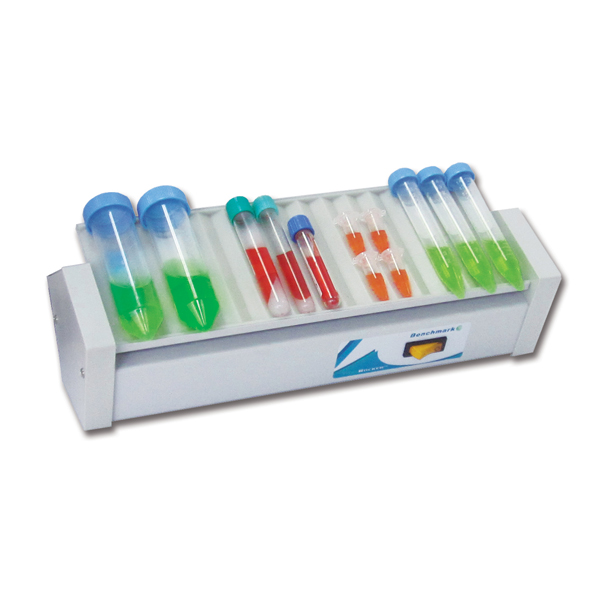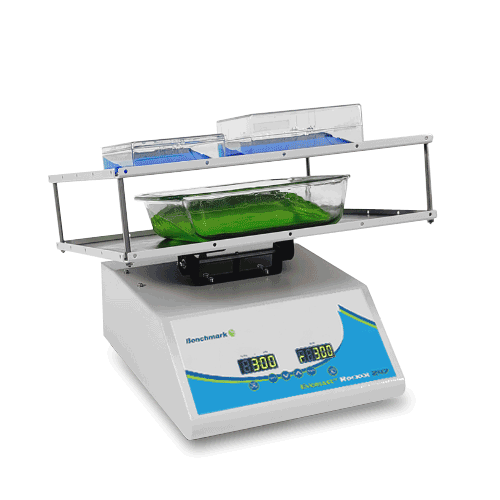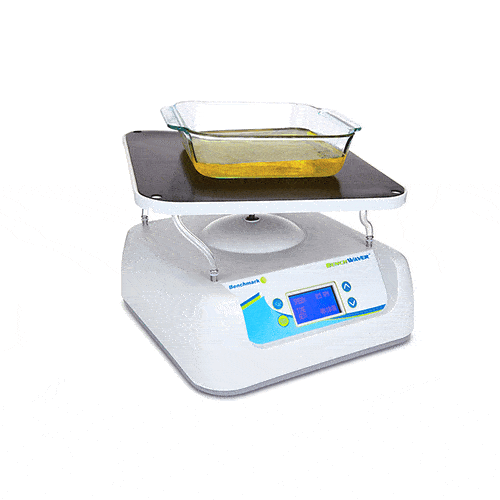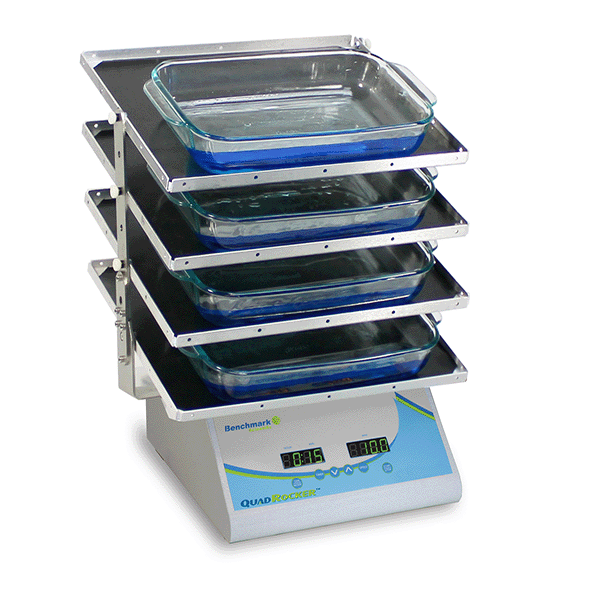Laboratory rockers are a common piece of lab equipment used for gentle mixing of patient samples, washing and staining DNA or protein electrophoresis gels, and other applications.
There are several things to consider when purchasing a lab rocker.
What kinds of vessels and liquids will be mixed with the lab rocker?
A rocker with a large, smooth platform is needed when mixing flat bottomed containers like gel boxes.
When mixing blood tubes or centrifuge tubes, a dimpled mat or grooved surface is needed to hold vessels in place.

A quality lab rocker will come with a removable rubber mat to protect metal surfaces from rust and contamination should a vessel leak while rocking.
The height of the vessels to be mixed is another important consideration.
A single platform lab rocker is a good choice for mixing media stored in tall bottles and containers, while double platform rockers are better for low-profile blot boxes, empty pipette tip boxes and glass trays.
What type of rocking motion is preferred for this application?
A lab rocker can be designed with either two-dimensional or three-dimensional rocking motion.
A 2D rocker may tilt side to side or front to back, while a 3D rocker, also called a nutating rocker, rises and falls as it pivots through a 360-degree orbit.


Both formats of lab rockers are appropriate for Western blot and gel incubation and can be used for mixing blood tubes as well.
The motion produced by a two-dimensional lab rocker tends to fully cover gel strips and membranes best, while three-dimensional motion is better for swirling liquids around a central point.
Should the lab rocker have fixed speed or variable speed?
When the lab rocker is intended to perform the same action repeatedly, a fixed-speed lab rocker delivers reliable and predictable performance.
Fixed-speed lab rockers usually operate at 12-15rpm and have a fixed platform tilt optimized for gentle washing and mixing.
Adjustable speed lab rockers provide greater flexibility for modifying existing protocols and for applications requiring both gentle and vigorous mixing.
A lab rocker with adjustable platform tilt offers control over an additional variable.
How large should my lab rocker be?
Lab rocker size is measured in two aspects: Footprint and platform size.
Because benchtop space is at a premium, a quality lab rocker should have a small footprint while offering a generous platform with the capability of expansion by adding tiers.
The Quadrocker from Benchmark Scientific is an example of how a lab rocker can excel at both.
The Quadrocker footprint is 13.5 x 8 inches and the included four platforms offer over 750 square inches of total space to hold numerous vessels.

Lab rockers that will be used inside an incubator need a small footprint and a small platform.
In what kind of environment will the lab rocker be used?
A quality lab rocker should be designed with components that will hold up under a range of conditions without breaking down.
A lab rocker should be durable to use inside a 4-degree cold room as well as a 37-degree incubator with up to 85 percent relative humidity.
Specialized lab rockers and orbital shakers for CO2 incubators and anaerobic chambers are built more ruggedly and carry a premium price tag.


